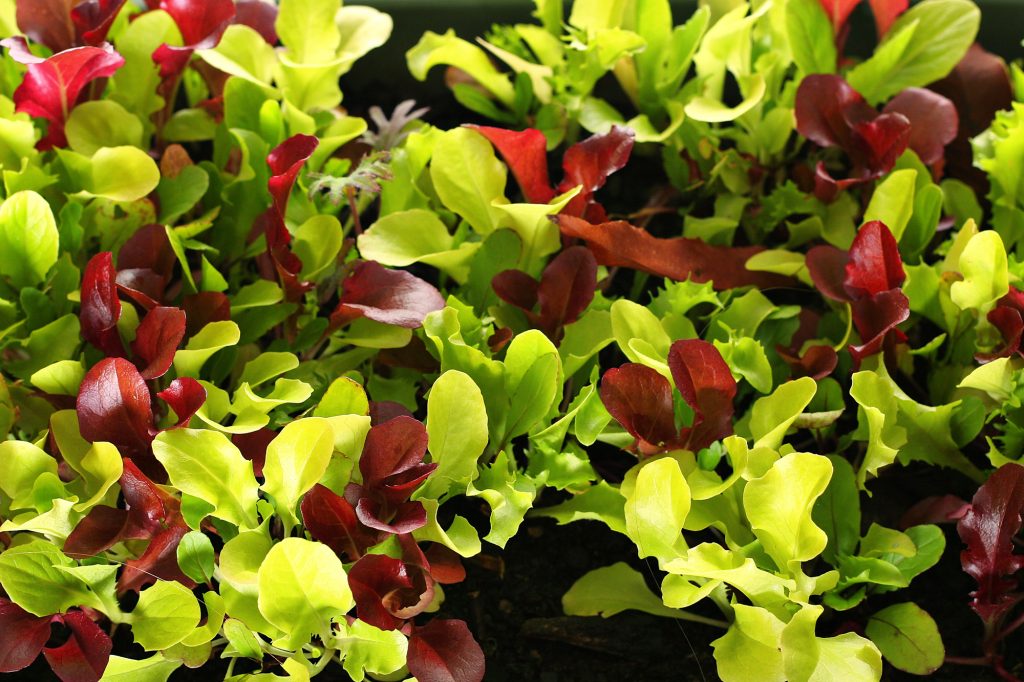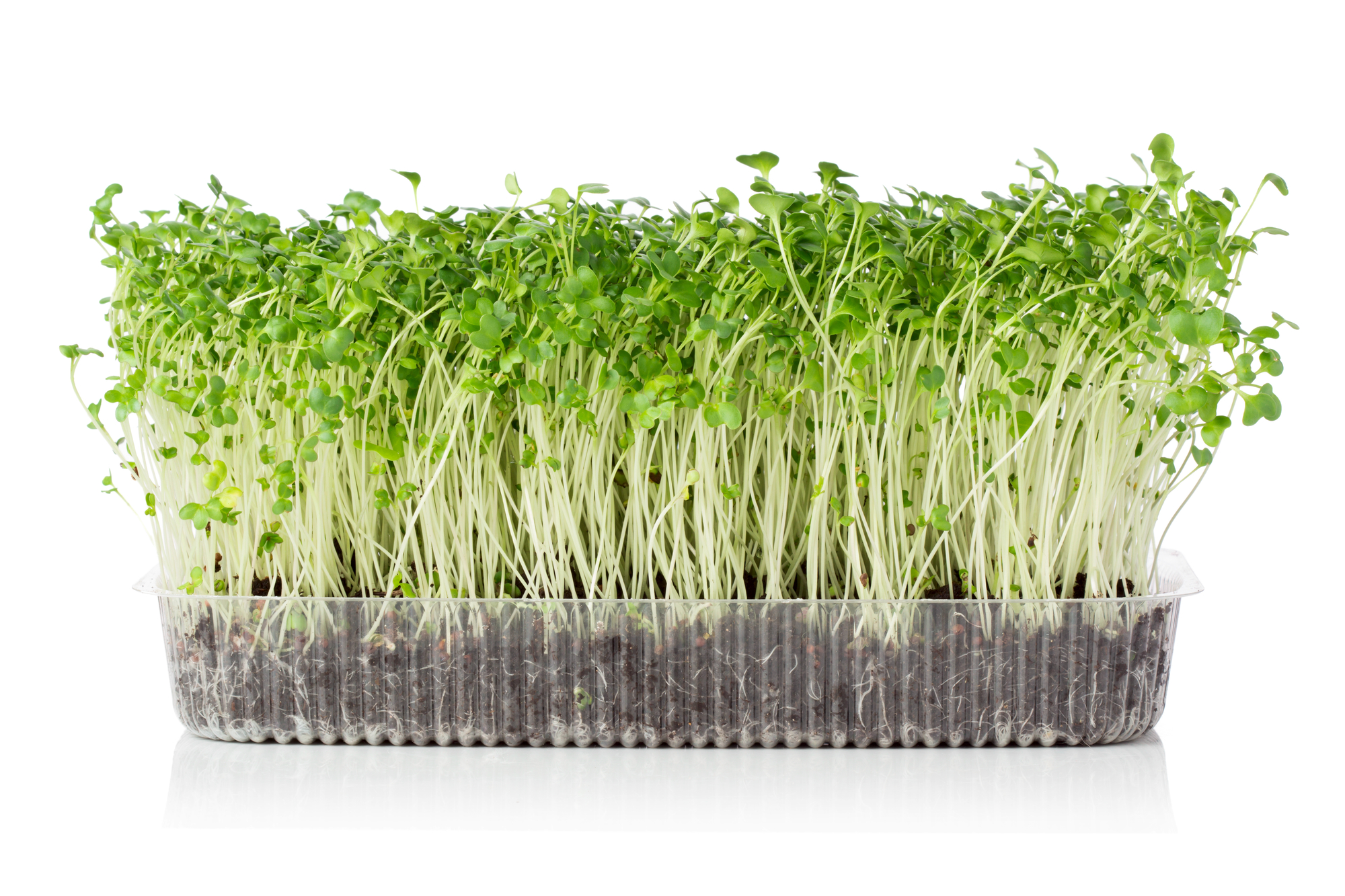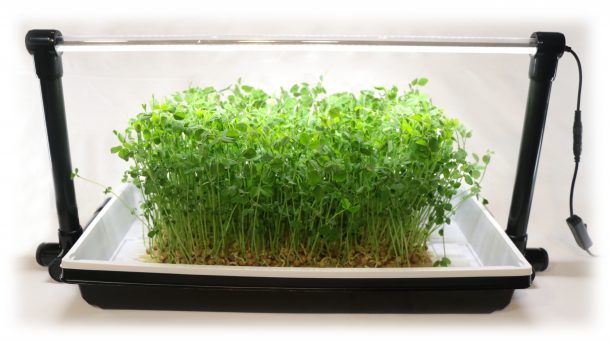
The answer is yes! Most people experience the delicate yet powerful flavors of microgreens only at restaurants, usually as a garnish. As more individuals discover not only the flavors but health benefits of these tiny plants, this is slowly beginning to change. I just recently discovered how microgreens are literal powerhouses of nutrition when I met the owner of Florida Micro Greens at an organic food market last week. I was so impressed with the taste and the growing kit, that I had to blog about it and share it with you.
Microgreens are not Mere “Sprouts”
Microgreens are the seedlings of edible vegetables that are usually harvested less than two weeks after they

germinate. They are tiny (hence the name), usually only 1-3 inches tall, and come in a rainbow of colors based on the veggie seedlings that are grown.
There is a big difference between the beans or seeds you may sprout in a jar at home and microgreens grown for nutrition and taste. Although sprouting has been practiced for eons (as I have done for decades), there are some dangers to jar sprouting that you should know about, namely mold overgrowth.
Did you know that the dizziness and sick-to-your-stomach feeling you sometimes get when you eat sprouts or drink wheatgrass may not be from the “detoxification effects” of the plant at all, but from mycotoxins?
Here’s a tip: If you are currently growing sprouts in a jar or in a plastic tray, take a picture of the base of those little guys with the flash on. If you see fuzzy, white, brown, or black growth on them at all, that is poisonous mold. Other signs of fungal overgrowth include strange odors and any discoloration or bruising on the stem.
Remember that any fungal growth on foods will spell trouble for someone who is on a healthy breast journey. If you are aiming to prevent or reverse breast cancer, mold toxicity on otherwise healthy food is the last thing you need.
Microgreens Done Right
What you do need, however, is the plethora of nutritional goodness (and yummy flavor) that safely-grown microgreens can provide. A 2012 joint study conducted by the University of Maryland and the United States Department of Agriculture looked at 25 different kinds of microgreens. They studied concentrations of ascorbic acid (vitamin C), tocopherols (vitamin E), phylloquinone (vitamin K), beta-carotene, and other nutrients within them.
The results were surprising even for the researchers. On average, they found 4 to 40 times higher amounts of beneficial nutrients in the microgreens when compared to mature plants. Red cabbage microgreens, for example, had 40 times more vitamin E and six times more ascorbic acid than regular cabbage, and cilantro microgreens had three times more beta-carotene than mature cilantro.
 It used to be that the only folks in the know about microgreens were chefs who used them for their brilliant colors and pungent tastes. This is beginning to change, however. The word about micronutrients is getting out, enough to draw the attention of even mainstream medical databases like WebMD.
It used to be that the only folks in the know about microgreens were chefs who used them for their brilliant colors and pungent tastes. This is beginning to change, however. The word about micronutrients is getting out, enough to draw the attention of even mainstream medical databases like WebMD.
My bet is that soon you won’t have to go to a fine dining restaurant to get your share of microgreen goodness. Companies like Florida Microgreens, which grow their greens on hemp beds and use food-safe trays to avoid harsh chemical runoff and mold, are changing the scene while educating the public at the same time. I met Nick at an organic foods market and was so impressed with his system and the taste of the microgreens that I wanted to share this with you. He has generously offered a 10% discount to our community when you use the code: breastcancerconqueror
Florida Microgreens is part of a growing movement of companies and farmers who want to bring these nutrient-rich foods to every household and are making plans to do so. My hope is that the trend of microgreens, which offer huge nutrition in tiny packages, keeps on growing! I will keep you posted as I experiment with my kit.
Yummy Microgreen Salad
This winter, consider adding microgreens to the menu by adding colorful cabbage microgreens for a salad dish that is savory, sweet, and just a little bit spicy.
2 cups multi-colored microgreens

1 avocado, cubed
½ cup sliced radishes
½ cup shredded carrot
2 tablespoons extra virgin olive oil
2 tablespoons lemon juice
2 cloves garlic, chopped
½ cup slivered almonds or chopped walnuts
Himalayan salt and pepper to taste
Mix the dry ingredients together lightly. Toss in avocado. Drizzle with olive oil and lemon juice and toss again lightly. Sprinkle with optional salt and pepper and serve immediately. For a sweeter taste, add balsamic vinegar instead of the lemon. Serves 4. Bon Appetit!
Hi Dr V and BC Conquerer, if you live in Southern New England the local, organic, well established, reputable growers of Microgreens are “Farming Turtles” in Exeter, RI (carried thru local distributors, Albert Organics and Farm Frsh Market mobile, and in Attleboro MA, “Two Friends Farm” – great people, Whoship and deliver to homes, markets and restaurants around RI and Boston.
Rebecca (Turning people on to the high sulfuforane content in broccoli Microgreens is a part of my hOMnaturale: yoga & natural family health & Detox hOMe & Body wellness programs, retreats & private health coaching)
Thank you for the information Rebecca!